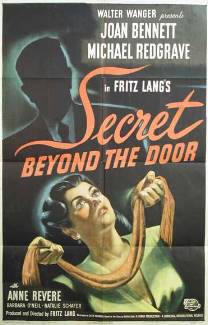
"Bluebeard" is a French folktale, the most famous surviving version of which was written by Charles Perrault and first published by Barbin in Paris in 1697 in Histoires ou contes du temps passé. The tale tells the story of a wealthy man in the habit of murdering his wives and the attempts of the present one to avoid the fate of her predecessors. "The White Dove", "The Robber Bridegroom", and "Fitcher's Bird" are tales similar to "Bluebeard". The notoriety of the tale is such that Merriam-Webster gives the word Bluebeard the definition of "a man who marries and kills one wife after another". The verb bluebearding has even appeared as a way to describe the crime of either killing a series of women, or seducing and abandoning a series of women.

Joan Geraldine Bennett was an American stage, film, and television actress, one of three acting sisters from a show-business family. Beginning her career on the stage, Bennett appeared in more than 70 films from the era of silent films, well into the sound era. She is best remembered for her film noir femme fatale roles in director Fritz Lang's films—including Man Hunt (1941), The Woman in the Window (1944), and Scarlet Street (1945)—and for her television role as matriarch Elizabeth Collins Stoddard in the gothic 1960s soap opera Dark Shadows, for which she received an Emmy nomination in 1968.

Prick Up Your Ears is a 1987 British film, directed by Stephen Frears, about the playwright Joe Orton and his lover Kenneth Halliwell. The screenplay was written by Alan Bennett, based on the 1978 biography by John Lahr. The film stars Gary Oldman as Orton, Alfred Molina as Halliwell, Wallace Shawn as Lahr, and Vanessa Redgrave as Peggy Ramsay.

Talking Heads is a 1988 TV series of dramatic monologues written for BBC television by British playwright Alan Bennett. The first series was broadcast on BBC1 in 1988, and adapted for radio on BBC Radio 4 in 1991. A second series was broadcast on BBC Two in 1998. They have since been included on the A-level and GCSE English Literature syllabus. Some episodes aired on PBS in the United States as part of its Masterpiece Theatre programme.
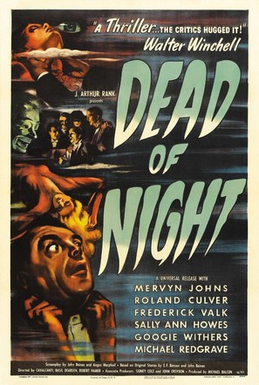
Dead of Night is a 1945 black and white British anthology supernatural horror film, made by Ealing Studios. The individual segments were directed by Alberto Cavalcanti, Charles Crichton, Basil Dearden and Robert Hamer. It stars Mervyn Johns, Googie Withers, Sally Ann Howes and Michael Redgrave. The film is best remembered for the concluding story featuring Redgrave and an insane ventriloquist's malevolent dummy.

An Englishman Abroad is a 1983 BBC television drama film based on the true story of a chance meeting of actress Coral Browne with Guy Burgess, a member of the Cambridge spy ring who spied for the Soviet Union while an officer at MI6. The production was written by Alan Bennett and directed by John Schlesinger. Browne stars as herself.

The Woman in the Window is a 1944 American film noir directed by Fritz Lang and starring Edward G. Robinson, Joan Bennett, Raymond Massey, and Dan Duryea. It tells the story of a psychology professor who meets a young femme fatale and murders her lover in self-defense.

They Do It with Mirrors is a detective fiction novel by British writer Agatha Christie, first published in the US by Dodd, Mead and Company in 1952 under the title of Murder with Mirrors and in UK by the Collins Crime Club on 17 November that year under Christie's original title. The US edition retailed at $2.50 and the UK edition at ten shillings and sixpence (10/6). The book features her detective Miss Marple.
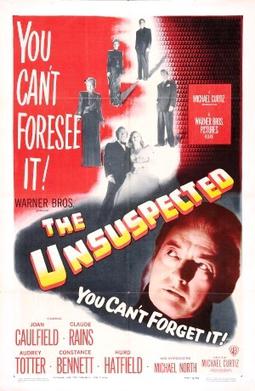
The Unsuspected is a 1947 American mystery film noir directed by Michael Curtiz and starring Claude Rains, Audrey Totter, Ted North, Constance Bennett, Joan Caulfield, and Hurd Hatfield. The film was based on the 1946 novel of the same title by Charlotte Armstrong. The screenplay was co-written by Bess Meredyth, who was married to director Curtiz.

Belle Gunness, born Brynhild Paulsdatter Størseth, nicknamed Hell's Belle, was a Norwegian-American serial killer who was active in Illinois and Indiana between 1884 and 1908. Gunness is thought to have killed at least 14 people, while some sources speculate her involvement in as many as 40 murders making her one of the most prolific female serial killers in history. Gunness seemingly died in a fire in 1908, but it is popularly believed that she faked her death. Her actual fate is unconfirmed.

The Killian Curse is a New Zealand kidult horror-fantasy television show, directed by Thomas Robins and Wayne Vinton. Starring Nick Blake and local New Zealand children, The Killian Curse tells the 21 stories of the students from Room 21, who must each face an evil curse placed on them by the sinister Charles Killian. Killian wants to get revenge on the people who caused his death shortly after founding the school in 1906. He needs to capture eleven souls to rise from the dead. There are two series which first aired in 2006 and 2008.

The Lady Vanishes is a 1938 British mystery thriller film directed by Alfred Hitchcock, starring Margaret Lockwood and Michael Redgrave. Written by Sidney Gilliat and Frank Launder, based on the 1936 novel The Wheel Spins by Ethel Lina White, the film is about an English tourist travelling by train in continental Europe who discovers that her elderly travelling companion seems to have disappeared from the train. After her fellow passengers deny ever having seen the elderly lady, the young woman is helped by a young musicologist, the two proceeding to search the train for clues to the old lady's disappearance.

Man Hunt is a 1941 American political thriller film, directed by Fritz Lang and starring Walter Pidgeon and Joan Bennett. It is based on the 1939 novel Rogue Male by Geoffrey Household and is set in Europe just prior to the Second World War. Lang had fled Germany into exile in 1933 and this was the first of his four anti-Nazi films, which include Ministry of Fear, Hangmen Also Die!, and Cloak and Dagger. It was Roddy McDowall's first Hollywood film after escaping London following the Blitz. Man Hunt was one of many films released in 1941 that were considered so pro-British that they influenced neutral members of the U.S. public to sympathize with the British side in World War II.
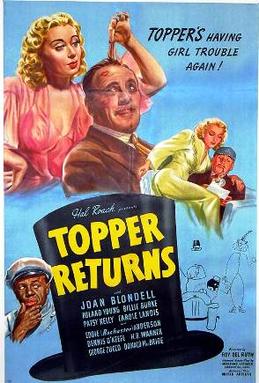
Topper Returns is a 1941 American supernatural comedy thriller film directed by Roy Del Ruth and written by Jonathan Latimer. The third and final installment in the initial series of supernatural comedy films inspired by the novels of Thorne Smith, it succeeds Topper (1937) and Topper Takes a Trip (1938).
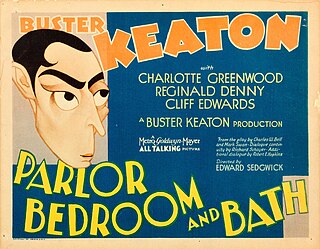
Parlor, Bedroom and Bath is an American pre-Code comedy film starring Buster Keaton, released by Metro-Goldwyn Mayer in 1931. It was Keaton's third talking picture after his successful silent career.

Shadow on the Wall is a 1950 American psychological thriller film directed by Patrick Jackson and starring Ann Sothern, Zachary Scott and Gigi Perreau and featuring Nancy Davis. It is based on the 1943 story Death in the Doll's House by Hannah Lees and Lawrence P. Bachmann.
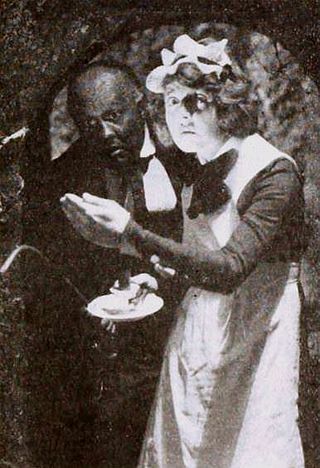
The Haunted Bedroom is a lost 1919 American silent drama film directed by Fred Niblo and starring Enid Bennett and Dorcas Matthews. The film was also distributed under the title The Ghost of Whispering Oaks.

Twin Beds is a 1942 American comedy film directed by Tim Whelan, and starring by George Brent and Joan Bennett. It was distributed by United Artists. The screenplay was written by Kenneth Earl, Curtis Kenyon and Eddie Moran, based on the play of the same name by Salisbury Field and Margaret Mayo.

They Met in the Dark is a 1943 British comedy thriller film directed by Karel Lamač and starring James Mason, Joyce Howard and Edward Rigby. The screenplay concerns a cashiered Royal Naval officer and a young woman who join forces to solve a murder and hunt down a German spy ring. The film features a single song sung by Phyllis Stanley, "Toddle Along". The film is very loosely based on the 1941 novel The Vanishing Corpse by Anthony Gilbert.
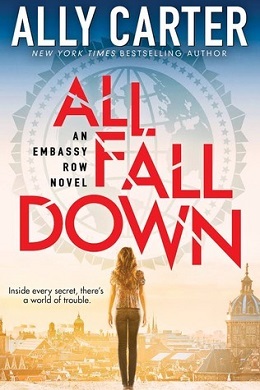
All Fall Down (2015) is a young adult novel by teen-fiction author Ally Carter. It is the first book in the Embassy Row series set in and around the diplomatic quarter of a Mediterranean capital city. The concept for the book was in the making from 2007, but only began being written in 2013. The second book of the series, See How They Run, was released on December 22, 2015. The third, and final book in the series, Take The Key And Lock Her Up, was released at the end of December, 2016; with some regions getting it in January, 2017.
